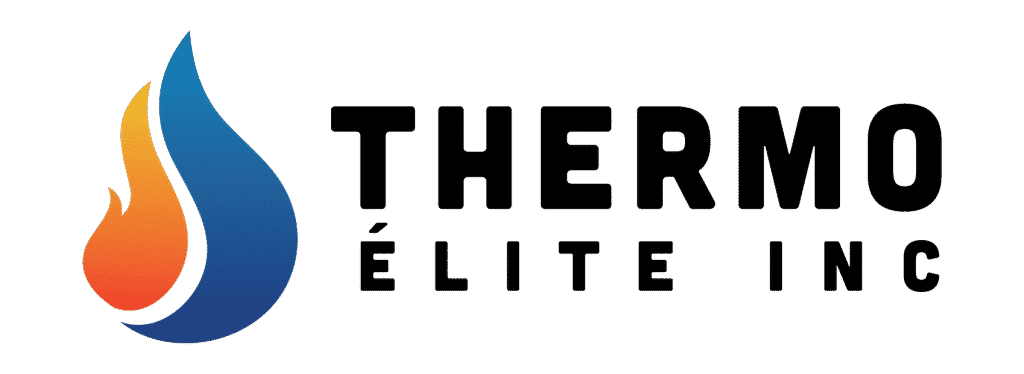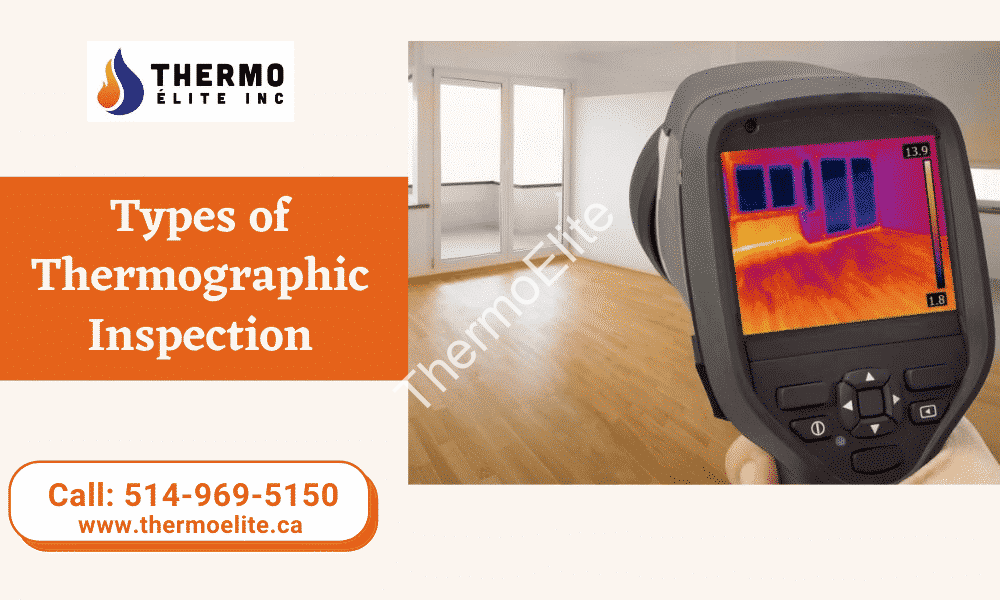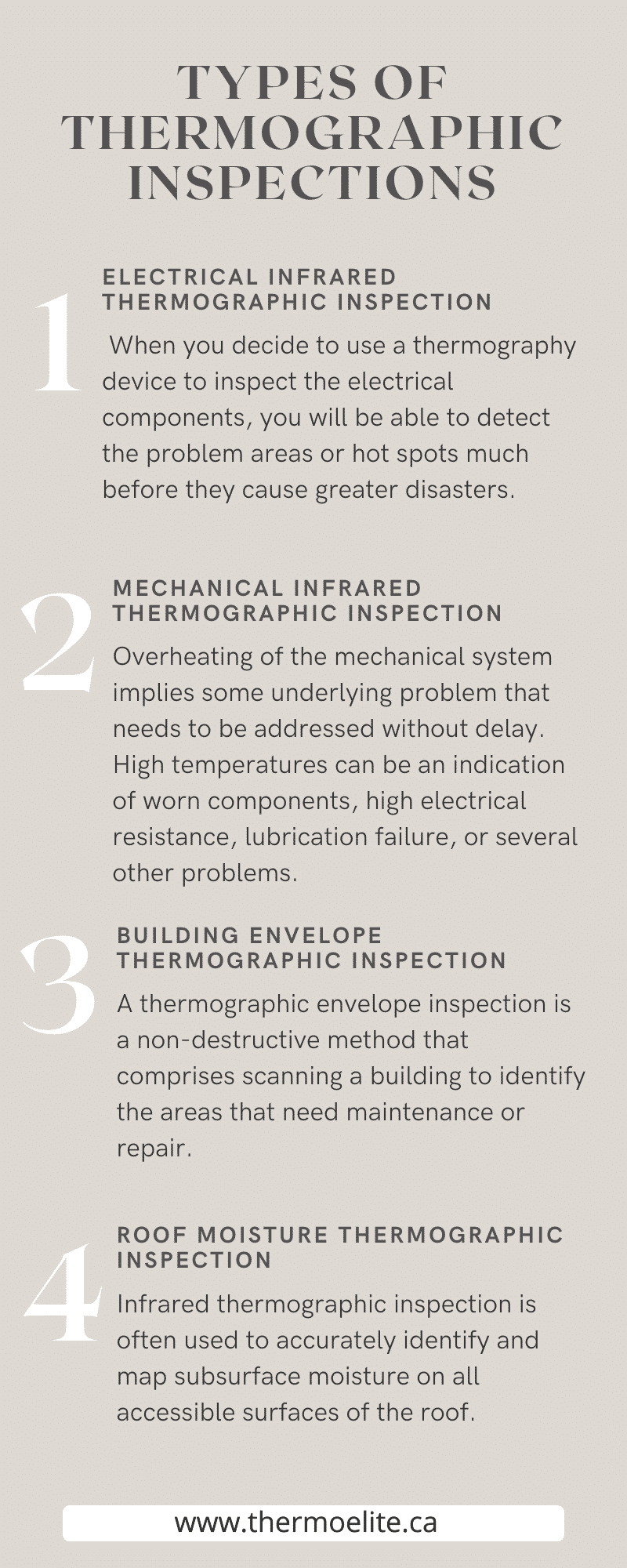Infrared equipment is used to quickly and accurately detect thermal anomalies, which threaten the reliability and safety of buildings, and electrical and mechanical systems. Infrared thermographic inspection is an effective type of non-destructive testing, which is often, used as a predictive maintenance tool. The testing is performed with the help of portable and non-contact infrared imaging systems. This equipment can easily detect heat or infrared energy (invisible to the human eye) emitted from all objects. Thus, temperature anomaly can be detected at an early stage to prevent disasters like fires thereby preventing harm to private citizens or personnel and damage to equipment.
Some of the immediate benefits of thermographic inspection include cost-saving, lower insurance premiums, detection of hot spots, creation of an efficient repair priority list, and safety of equipments. Since most of the time, thermographic inspections are carried out to sort out insurance-related issues but they must be done frequently as a part of a predictive maintenance program in various industries. The cost of inspection is always justified by the numerous benefits of inspections.
Types of Thermographic Inspections:
The type of thermographic inspection you choose depends on the application and some of the most common inspection types include:
Electrical Infrared Thermographic Inspection
There’s an obvious and strong relationship between the heat emitted from electrical equipment and resistance and electrical current. Higher resistance indicates a corroded or loose connection, manufacturing defect, or failing equipment. When you decide to use a thermography device to inspect the electrical components, you will be able to detect the problem areas or hot spots much before they cause greater disasters. Bigger failures can lead to irreparable damage to equipment as well as building structures thereby resulting in production downtime and expensive insurance claims. Now, there’re several instances wherein these failures resulted in personal injury and even death of people working in or around the affected areas.
Electrical Thermographic Inspection – The Process
Since the entire thermographic inspection process is non-destructive and non-contact so interruption in production or shutdowns can be easily avoided. Thermographers inspect equipment using the best-infrared equipment while operating under normal conditions so that there’s no disruption of production and service schedules. The inspection is usually completed swiftly and efficiently and to ensure accurate assessment, it’s important to remove the covers. There’re a few equipments that have special viewing windows for infrared inspection. This a great option to inspect without ever removing the cover. Often the thermographers can inspect the electrical systems in real-time, which helps owners understand the practical effects of emerging problems in components. Some of the common issues unearthed by thermographic inspections include corrosion, loose connection, imbalanced loads, overloaded or faulty breakers etc.
Thermographic Inspections of Electrical equipment includes the following:
- MCC’s
- Electrical Panels
- Transformers
- Switchgear
- Disconnects
- Starters
- Buss Ducts
- Junction Boxes
- Solar Panels
- Splitters
- Splices
- High Voltage Terminations / Cables
- Transmission Lines
- Substations
Mechanical Infrared Thermographic Inspection
Overheating of the mechanical system implies some underlying problem that needs to be addressed without delay. High temperatures can be an indication of worn components, high electrical resistance, lubrication failure, or several other problems. If proper maintenance and repair of the components are not undertaken on time then it could lead to expensive or greater failures. Manual or visual identification of faults or failures is not only expensive but also ineffective. On the other hand, thermographic inspections can easily detect these problems along with other common issues like bearings, overheating motors, shafts, couplings, belts, u-joints resulting from lack of lubrication, overloading, miss-alignment, etc.
Mechanical Infrared Inspections can be performed on the following equipment:
- HVAC Equipment
- Generators
- Electric Motors
- Boilers
- Bearings
- Chillers
- Furnaces
- Steam Valves and Traps
- Engines
Building Envelope Thermographic Inspection
A thermographic envelope inspection is a non-destructive method that comprises scanning a building to identify the areas that need maintenance or repair. Once the inspection is complete, the thermographer will identify, prioritize, and even document any heat loss issues resulting from moisture build-ups and cold air infiltrations. These inspections can conveniently point out the wet, damaged or missing insulation, breaches in the vapor barrier, ice dams, frozen or broken pipes, mold infestations, etc.
Inspection of a building’s exterior (also known as the envelope) is also done to identify issues with ceiling windows, floors, doors, which work in tandem to control the airflow inside and outside the structure, prevent moisture, and heat.
The primary aim is to cut down the energy as well as repair costs, maintain the construction quality, and improve the health, comfort, and even productivity of occupants.
Roof Moisture Thermographic Inspection
Infrared thermographic inspection is often used to accurately identify and map subsurface moisture on all accessible surfaces of the roof. The biggest advantage of such an inspection is to detect the problems before they lead to expensive and bigger problems. The problem areas can be targeted specifically to avoid unnecessary repair work of the roof. Compared to all other non-destructive testing, infrared imaging can accurately map the roof moisture.
The thermography equipment can easily capture every thermal signature on the roof’s heat loss during the night. Sun’s heat is retained longer in the roof areas that have subsurface moisture trapped within them than the dry areas. These anomalies can be easily detected by the infrared thermal imaging cameras and the warmer areas can be viewed on the screen. Once the abnormal areas are marked, they can be easily marked using spray paint so that repair work is undertaken at the earliest.
Infrared images coupled with digital photographs can help thermographers locate the areas that need re-roofing. Larger buildings need this more often than the normal residential buildings as even a small wet patch can prove to be disastrous.
Conclusion
Thermal imaging is an effective technique to identify electrical and mechanical issues in industries and save thousands of dollars. The infrared imaging technique is equally effective in detecting issues in buildings and roofs. Early detection is the only way to prevent unwanted accidents, unnecessary repair works, and expenses.




Add Comment